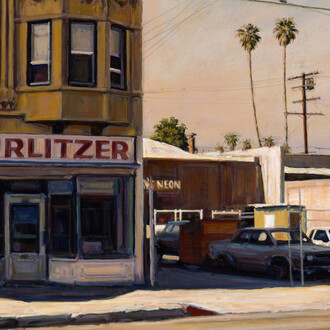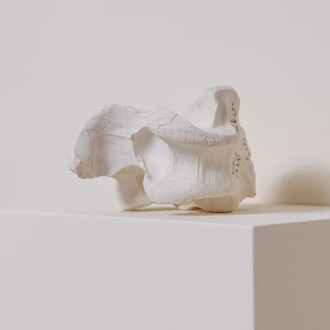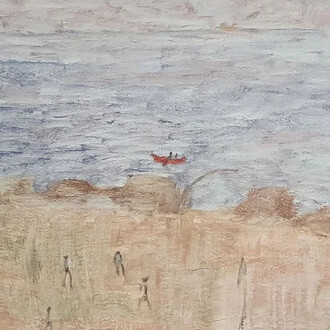As a youth entering school in America, Helen Kim was stunned by the beauty of the art on display. Set high on the wall above the chalkboard, the twenty-six drawings were unlike anything she’d ever encountered growing up in Korea. “I didn’t know English when my family moved to the U.S.”, she says. “So much was unfamiliar to me". Learning that the drawings were the English alphabet, she was elated, and even more delighted when she learned to draw the letters for herself. “When I eventually learned cursive shortly afterwards, I was lauded for my beautiful penmanship”, she recalls. “It masked the contents of what I was writing, which was not my forte”.
Decades later, handwriting remains central to Kim’s artistic practice, an essential dimension of oil paintings that contain layers of enigmatic lettering in conversation with saturated color fields. Modernism is pleased to present over 40 recent works in Story lines.
The exhibition title reflects Kim’s artistic process. “My life’s stories are visually narrated and abstracted in my paintings”, Kim says. “These memories and events, which have shaped who I am, are the conceptual catalyst for my art”.
In addition to the memories of the mesmerizing English alphabet, Kim is deeply influenced by the material world of her childhood. She was especially taken by the vivid colors of Korean ceremonial clothing, the saturated hues of silk gift pouches containing money or jewelry, as notable for the ornate designs of the fabric as the objects they contained. And then there were the bright colors of persimmons, apples and pears, set out on birthdays and anniversaries. “I was intrigued by the offset, repetitive pattern of the organic shapes of the fruit arrangements”, she remembers.
These memories are embedded in her paintings, often reflected in titles such as Taste of candy and Lucky penny. Even if the viewer is unfamiliar with the specifics, the specificity of the memories is apparent, and leads the viewer to vicariously experience the artist’s feelings and thoughts past and present.
Like memories, the paintings have many layers. Kim begins with a single color. After applying a field of oil and cold wax to the panel, she draws with oil sticks, often inscribing particular words because of the shapes the cursive letters make. Frequently drawn with her non-dominant hand, the letterforms serve as the first move in a visual puzzle that Kim works through by alternate layers of color and line until a solution is reached.
The result is a sort of palimpsest replete with pentimenti. Kim sees the process as “about the interpretation, exploration and execution of an idea,” every stage of which is preserved in the depth of oil and cold wax. Although there are resonances with the paintings of Giorgio Morandi and Cy Twombly, Kim’s training as an architect is essential to her process (and the crossover work of Le corbusier is an important influence). In each painting, Kim builds a visual world through the give and take of personal marks, discovering novel structures to scaffold her past.
“Each stage of the process is like putting together a kit of parts to tell a story”, Kim says. “My paintings are a visual autobiography”.
















